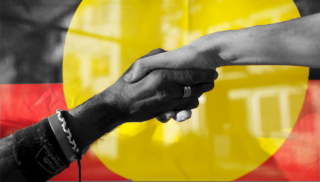A furore has erupted this week over the Prime Minister’s description of aboriginals living in remote communities as being there as a result of their “lifestyle choices”. Aboriginal leaders, even those who have been supportive of the Prime Minister, have expressed disappointment in what seems to them to be a failure to understand the complexities of the situation.
According to the Australian Bureau of Statistics only a very small percentage of the indigenous population in the eastern states live in remote or very remote locations. In Western Australia however, 41% of indigenous people live in a remote or very remote location and in the Northern Territory that number is 83%. Just over half of remote indigenous communities have less in 20 people living in them.
The ABC reports that indigenous leaders themselves are divided on whether or not some of the least viable communities should be closed down (http://www.abc.net.au/news/2014-11-20/leaders-divided-over-plan-to-close-indigenous-communities/5907446). Whatever the outcomes of these discussions, indigenous leader Noel Pearson hit on one of the most crucial issues when he said:
‘There was a time in our history when blackfellas were being pushed out of town and into remote communities, missions and church-run institutions.
‘Now, policy fashion changes, and we want to put Aboriginal people into trains and send them into the suburbs of Perth or back onto the fringes of country towns,’ he said.
‘These are real human beings, with a long history of displacement and great uncertainty about their place in Australian society.
‘Don’t talk about the great welcoming mat in the cities and country towns that awaits these people, because we know that people coming in from remote areas just end up in the underclass and fringes of these communities. ‘
http://www.abc.net.au/radionational/programs/drive/remote-aboriginal-community-furore/6304578
This sense of displacement is made all the more traumatic because of the relationship indigenous people have to the land.
Land is fundamental to Indigenous people, both individually and collectively. Concepts of Indigenous land ownership were and are different from European legal systems. Boundaries were fixed and validated by the Dreaming creation stories. Each individual belonged to certain territories within the family group and had spiritual connections and obligations to particular country. Hence land was not owned; one belonged to the land. Aboriginal people experience the land as a richly symbolic and spiritual landscape rather than merely a physical environment.Working Together: Aboriginal and Torres Strait Islander Mental Health and Wellbeing Principles and Practice, edited by Nola Purdie, Pat Dudgeon and Roz Walker
The discussion should not be reduced to economics. It is not as though there is some flat cost of services that applies equally across the country. It will always be more expensive to provide services to some communities than others. A willingness to fund them is a sign that we believe in a decent life for all Australians.


